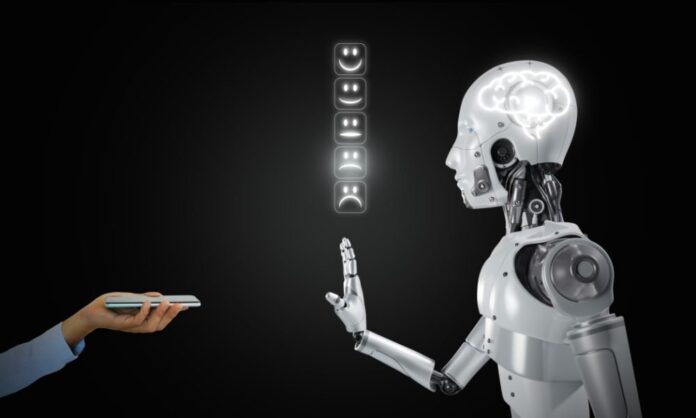Introduction to AI Consciousness
AI consciousness is a complex and fascinating concept that has captured the interest of researchers, scientists, philosophers, and the public. As AI continues to evolve, the question inevitably arises: Can machines attain a level of consciousness comparable to human beings? With the emergence of Large Language Models (LLMs) and Generative AI, the road to achieving the replication of human consciousness is also becoming possible. A former Google AI engineer, Blake Lemoine, recently propagated the theory that Google’s language model LaMDA is sentient, i.e., shows human-like consciousness during conversations.
What Is Consciousness?
Consciousness refers to awareness of sensory (vision, hearing, taste, touch, and smell) and psychological (thoughts, emotions, desires, beliefs) processes. However, the subtleties and intricacies of consciousness make it a complex, multi-faceted concept that remains enigmatic, despite exhaustive study in neuroscience, philosophy, and psychology. David Chalmers, philosopher and cognitive scientist, mentions the complex phenomenon of consciousness as follows: “There is nothing we know about more directly than consciousness, but it is far from clear how to reconcile it with everything else we know. Why does it exist? What does it do? How could it possibly arise from lumpy gray matter?”
The Current State of AI: Non-conscious Entities
AI today has shown remarkable advancements in specific domains. AI models are extremely good at solving narrow problems, such as image classification, natural language processing, speech recognition, etc., but they don’t possess consciousness. They lack subjective experience, self-consciousness, or an understanding of context beyond what they have been trained to process. They can manifest intelligent behavior without any sense of what these actions mean, which is entirely different from human consciousness.
Theoretical Frameworks for AI Consciousness
Theoretical frameworks such as Integrated Information Theory (IIT), Global Workspace Theory (GWT), and Artificial General Intelligence (AGI) provide a frame of reference for how AI consciousness can be achieved.
1. Integrated Information Theory (IIT)
Integrated Information Theory is a theoretical framework proposed by neuroscientist and psychiatrist Giulio Tononi to explain the nature of consciousness. IIT suggests that any system, biological or artificial, that can integrate information to a high degree could be considered conscious. AI models are becoming more complex, with billions of parameters capable of processing and integrating large volumes of information. According to IIT, these systems may develop consciousness.
2. Global Workspace Theory (GWT)
Global Workspace Theory is a cognitive architecture and theory of consciousness developed by cognitive psychologist Bernard J. Baars. According to GWT, consciousness works much like a theater. The “stage” of consciousness can only hold a limited amount of information at a given time, and this information is broadcast to a “global workspace” – a distributed network of unconscious processes or modules in the brain. Applying GWT to AI suggests that, theoretically, if an AI were designed with a similar “global workspace,” it could be capable of a form of consciousness.
3. Artificial General Intelligence (AGI)
Artificial General Intelligence is a type of AI that can understand, learn, and apply knowledge across a wide range of tasks, similar to a human being. AGI contrasts with Narrow AI systems, designed to perform specific tasks, like voice recognition or chess playing, that currently constitute the bulk of AI applications. In terms of consciousness, AGI has been considered a prerequisite for manifesting consciousness in an artificial system.
Challenges in Achieving Artificial Consciousness
1. Computational Challenges
The Computational Theory of Mind (CTM) considers the human brain a physically implemented computational system. The proponents of this theory believe that to create a conscious entity, we need to develop a system with cognitive architectures similar to our brains. But the human brain consists of 100 billion neurons, so replicating such a complex system would require exhaustive computational resources.
2. The Hard Problem of Consciousness
The “hard problem of consciousness” is an important issue in the study of consciousness, particularly when considering its replication in AI systems. The hard problem signifies the subjective experience of consciousness, the qualia (phenomenal experience), or “what it is like” to have subjective experiences. Philosophers Nicholas Boltuc and Piotr Boltuc, while providing an analogy for the hard problem of consciousness in AI, say: “AI could in principle replicate consciousness (H-consciousness) in its first-person form (as described by Chalmers in the hard problem of consciousness.) If we can understand first-person consciousness in clear terms, we can provide an algorithm for it; if we have such algorithm, in principle we can build it”
3. Ethical Dilemma
Ethical considerations around AI consciousness add another layer of complexity and ambiguity to this ambitious quest. Artificial consciousness raises some ethical questions:
- If an AI can understand, learn, and adapt to the extent of humans, should it be given rights?
- If a conscious AI commits a crime, who is held accountable?
- If a conscious AI is destroyed, is that considered damage to property or something similar to murder?
Conclusion
Progress in neuroscience and advances in machine learning algorithms can create the possibility of broader Artificial General Intelligence. Artificial consciousness, however, will remain an enigma and a subject of debate among researchers, tech leaders, and philosophers for some time. AI systems becoming conscious comes with various risks that must be thoroughly studied. As we continue to explore and understand the complexities of human consciousness, we may uncover the secrets to creating conscious machines. Until then, the question of whether machines can attain human-like consciousness remains a topic of fascination and inquiry. For more information on AI and its related topics, visit unite.ai.

